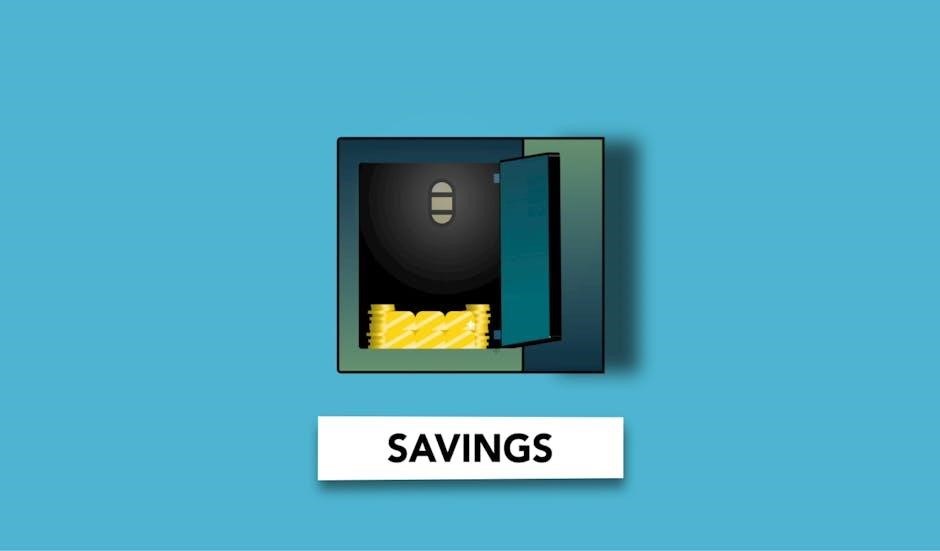TeenNick TV Guide: A Comprehensive Overview
TeenNick, a vibrant channel under the Nickelodeon umbrella, caters to a teen audience with a mix of original series, reruns of popular Nickelodeon shows, and classic programming․ Launched as a rebrand on September 28, 2009, it offers a unique blend that captures the attention of viewers seeking both current and nostalgic content․
What is TeenNick?
TeenNick is a cable television network in the United States, a part of the Nickelodeon group owned by ViacomCBS (now Paramount Global)․ It primarily targets a teenage audience, offering a mix of live-action and animated programs․ TeenNick’s programming includes reruns of popular shows from Nickelodeon’s library, original series aimed at teens, and classic shows that appeal to a nostalgic audience․
The channel distinguishes itself by providing a space for teen-centric content, separate from the broader family-oriented programming of Nickelodeon․ This allows TeenNick to cater specifically to the interests and preferences of teenagers, featuring shows that deal with issues, humor, and storylines relevant to their lives․ Some of the popular shows that have aired on TeenNick include “iCarly,” “Victorious,” “Drake & Josh,” and “The Thundermans,” among others․
TeenNick also features programming blocks dedicated to specific themes or eras, such as “The Splat” (formerly “NickRewind”), which showcases classic Nickelodeon shows from the 1990s and early 2000s․ This combination of current and classic content makes TeenNick a destination for both new and familiar shows․
TeenNick’s History and Rebranding
TeenNick’s history is rooted in the evolution of Nickelodeon’s programming strategy to cater to different age groups․ Initially, Nickelodeon featured a block of teen-oriented shows called “TEENick․” Concurrently, Noggin, another channel under the Nickelodeon umbrella, had a teen-focused block called “The N․” In 2009, Viacom decided to merge these two blocks into a single, dedicated channel, leading to the birth of TeenNick․
The official rebranding to TeenNick occurred on September 28, 2009․ This transition marked a significant shift, consolidating teen-centric content into one accessible platform․ The move aimed to streamline the viewing experience for teenagers, offering a consistent schedule of programs targeted at their interests․ The rebranding also allowed for a more cohesive branding strategy, strengthening the channel’s identity as a destination for teen entertainment․
Before the rebranding, “The N” was known for its edgier, more mature content compared to Nickelodeon’s main programming․ With the launch of TeenNick, some of this programming was integrated, while Nickelodeon continued to focus on younger audiences․ This strategic alignment allowed TeenNick to carve out its niche in the competitive landscape of children’s and teen television․
Key Programs Broadcast on TeenNick
TeenNick’s programming lineup consists of a mix of original series, reruns of popular Nickelodeon shows, and classic favorites, catering to a broad spectrum of teen preferences․ Some of the key programs that have been broadcast on TeenNick include iconic shows like “iCarly,” known for its comedic take on teenage life and internet stardom․ “Victorious,” another popular series, showcases the talents of aspiring performers at a performing arts high school․
In addition to these, “Drake & Josh,” a classic from the early 2000s, continues to resonate with audiences due to its humorous portrayal of stepbrothers navigating adolescence․ “Ned’s Declassified School Survival Guide” offers comedic advice for middle school challenges, while “Zoey 101” follows a group of friends at a boarding school․ These shows represent the channel’s commitment to providing engaging and relatable content for teenagers․
Furthermore, TeenNick often airs reruns of shows like “The Thundermans” and “Henry Danger,” which were originally broadcast on Nickelodeon․ This strategy allows the channel to maintain a consistent flow of popular content while also introducing these shows to new audiences․ The inclusion of classic Nickelodeon cartoons, such as “Hey Arnold!” and “Rocko’s Modern Life,” through programming blocks like “NickRewind,” adds a nostalgic element that appeals to both younger viewers and adults who grew up watching these shows․
TeenNick Schedule and Programming Blocks
TeenNick’s schedule is strategically designed to cater to its target audience, typically featuring a mix of live-action sitcoms, animated series, and classic Nickelodeon content throughout the day․ The programming blocks play a crucial role in organizing the daily schedule and attracting viewers with specific interests․ One notable programming block is “NickRewind,” which focuses on airing classic Nickelodeon shows from the 1990s and early 2000s․
This block offers a nostalgic experience for viewers who grew up watching these shows, while also introducing them to a new generation․ The specific timeslots for “NickRewind” and other programming blocks may vary, so viewers should consult the most up-to-date schedule to ensure they don’t miss their favorite shows․ In addition to the dedicated programming blocks, TeenNick’s schedule also includes regular airings of popular series like “iCarly,” “Victorious,” and “Drake & Josh․”
These shows are typically spread throughout the day to provide a consistent stream of engaging content․ The schedule is often adjusted to accommodate special events, such as marathons of popular shows or holiday-themed programming․ To stay informed about the latest changes to TeenNick’s schedule, viewers can check the official TeenNick website or consult TV listing guides․ This ensures they can plan their viewing habits accordingly and enjoy the programming they love․
TeenNick’s Target Audience
TeenNick’s primary target audience consists of teenagers and young adolescents, generally ranging in age from 13 to 19․ However, the channel’s programming also appeals to a broader demographic, including older viewers who grew up watching classic Nickelodeon shows and younger children who enjoy the lighthearted and humorous content․ The channel’s programming is carefully curated to align with the interests and sensibilities of this target audience, focusing on themes such as friendship, family, school, and navigating the challenges of adolescence․
TeenNick strives to create a safe and inclusive viewing environment, offering content that is both entertaining and relatable for its target audience․ The channel’s programming often features diverse characters and storylines, reflecting the varied experiences of teenagers and young adults․ In addition to its core demographic, TeenNick also attracts viewers who appreciate the nostalgia associated with classic Nickelodeon shows․
The “NickRewind” programming block, in particular, has proven to be a popular draw for viewers who grew up watching these shows, providing a sense of familiarity and comfort․ By catering to both current trends and nostalgic preferences, TeenNick has successfully cultivated a loyal and engaged audience․ The channel’s understanding of its target audience is evident in its programming choices, which consistently resonate with viewers and solidify TeenNick’s position as a leading destination for teen-oriented content․
Where to Find TeenNick’s TV Schedule
Finding TeenNick’s TV schedule is relatively straightforward, thanks to the numerous resources available online and through traditional television providers․ One of the most reliable methods is to visit the official Nickelodeon website, where a dedicated section typically provides the most up-to-date listings for TeenNick programming․ This schedule usually includes detailed information about show times, episode titles, and brief descriptions․
Many television providers, such as DIRECTV and cable companies, also offer on-screen guides that display the current and upcoming programs on TeenNick․ These guides are easily accessible through your television remote and allow you to browse the schedule by time or show title․ Additionally, several third-party websites and TV guide apps provide comprehensive listings for various channels, including TeenNick․ These platforms often offer customizable options, allowing you to set reminders for your favorite shows and receive notifications when they are about to air․

For those who prefer a more traditional approach, printed TV guides may also include TeenNick’s schedule․ However, these guides may not always be as up-to-date as online resources, so it is advisable to cross-reference the information with online listings․ By utilizing these various resources, viewers can easily stay informed about TeenNick’s programming and ensure they don’t miss their favorite shows․
TeenNick’s Availability on Different Platforms
TeenNick, as a subsidiary of Nickelodeon, enjoys widespread availability across various platforms, ensuring that its programming reaches a broad audience․ Traditionally, TeenNick is accessible through cable and satellite television providers like DIRECTV, Dish Network, and various local cable companies․ These providers typically include TeenNick as part of their standard or expanded channel packages, making it easily accessible to subscribers․
In recent years, TeenNick has expanded its reach to digital platforms, catering to the growing trend of online streaming․ Many live TV streaming services, such as Sling TV, YouTube TV, and Hulu + Live TV, offer TeenNick as part of their channel lineups․ This allows viewers to watch TeenNick’s programming on their computers, smartphones, tablets, and smart TVs, providing greater flexibility and convenience․
Furthermore, select TeenNick shows are available on-demand through the Nickelodeon website and app, as well as through various digital distribution platforms like Amazon Prime Video and iTunes․ This allows viewers to catch up on missed episodes or re-watch their favorite shows at their convenience․ However, it’s important to check the specific terms and conditions of each platform, as availability may vary depending on the region and subscription status․ This multi-platform approach ensures that TeenNick remains accessible to viewers regardless of their preferred viewing method․
TeenNick vs․ Nickelodeon: Key Differences
While both TeenNick and Nickelodeon fall under the same ViacomCBS (now Paramount Global) umbrella, they cater to distinct age groups and programming preferences․ Nickelodeon primarily targets a younger audience, typically children aged 2-11, with shows like “SpongeBob SquarePants,” “Dora the Explorer,” and “The Loud House․” Its content is generally geared towards early childhood development and entertainment․
TeenNick, on the other hand, is designed for an older demographic, specifically teenagers and young adults․ The programming on TeenNick often includes a mix of live-action sitcoms, dramas, and animated series that deal with themes and issues relevant to teenagers, such as relationships, school, and identity․ While some shows may overlap between the two channels, TeenNick tends to feature more mature content and storylines․

Another key difference lies in the overall tone and style of the networks․ Nickelodeon maintains a lighthearted and playful atmosphere, while TeenNick often explores more complex and nuanced themes․ TeenNick also airs classic Nickelodeon shows that appeal to a nostalgic audience, further distinguishing it from the flagship channel’s current focus on younger viewers․ Essentially, Nickelodeon is for kids, while TeenNick bridges the gap between childhood and adulthood with content tailored to the evolving interests of teenagers․

Popular TeenNick Shows of the Past
TeenNick has been home to a variety of shows that have resonated with teenage audiences over the years, creating a sense of nostalgia for many who grew up watching the channel․ Among the most popular were series that originally aired on Nickelodeon but found a second life on TeenNick, such as “Drake & Josh,” known for its comedic duo and relatable teenage situations․ “iCarly,” with its innovative web show format, also garnered a significant following, showcasing the evolving landscape of media consumption among teens․
“Victorious,” another popular show, followed aspiring performers at a performing arts high school, captivating viewers with its musical numbers and relatable characters․ These shows often dealt with themes of friendship, identity, and the challenges of growing up, resonating with the target audience․ Furthermore, TeenNick has also aired classic Nickelodeon animated series like “Hey Arnold!” and “Rocko’s Modern Life” during its NickRewind programming block, offering a nostalgic trip for older viewers․
Other notable shows that have graced TeenNick’s lineup include “Ned’s Declassified School Survival Guide,” which provided humorous tips for navigating middle school, and “Zoey 101,” which explored the lives of students at a boarding school․ These series, with their engaging storylines and relatable characters, contributed to TeenNick’s popularity and cemented its place in the hearts of many teenagers who grew up watching the channel․
Future of TeenNick Programming
The future of TeenNick programming appears to be focused on a blend of nostalgia and contemporary content, aiming to capture both existing viewers and attract new ones․ With the rise of streaming services, TeenNick faces the challenge of remaining relevant in a rapidly changing media landscape․ One potential direction involves further expansion of its NickRewind block, capitalizing on the popularity of classic Nickelodeon shows and appealing to older audiences seeking a nostalgic experience․

Another avenue for growth could involve developing original series that cater to the current interests and concerns of teenagers, addressing topics such as social media, mental health, and identity exploration․ Collaborations with popular influencers and content creators could also help TeenNick reach a wider audience and stay ahead of emerging trends․ Furthermore, incorporating interactive elements into programming, such as live polls and Q&A sessions, could enhance viewer engagement and create a sense of community․
As ViacomCBS (now Paramount Global) continues to invest in streaming platforms like Paramount+, TeenNick’s programming strategy may also involve creating content that complements the offerings on these platforms, potentially leading to crossover events or spin-off series․ By embracing innovation and adapting to the evolving preferences of its target audience, TeenNick can secure its position as a go-to destination for teen-oriented entertainment in the years to come․





